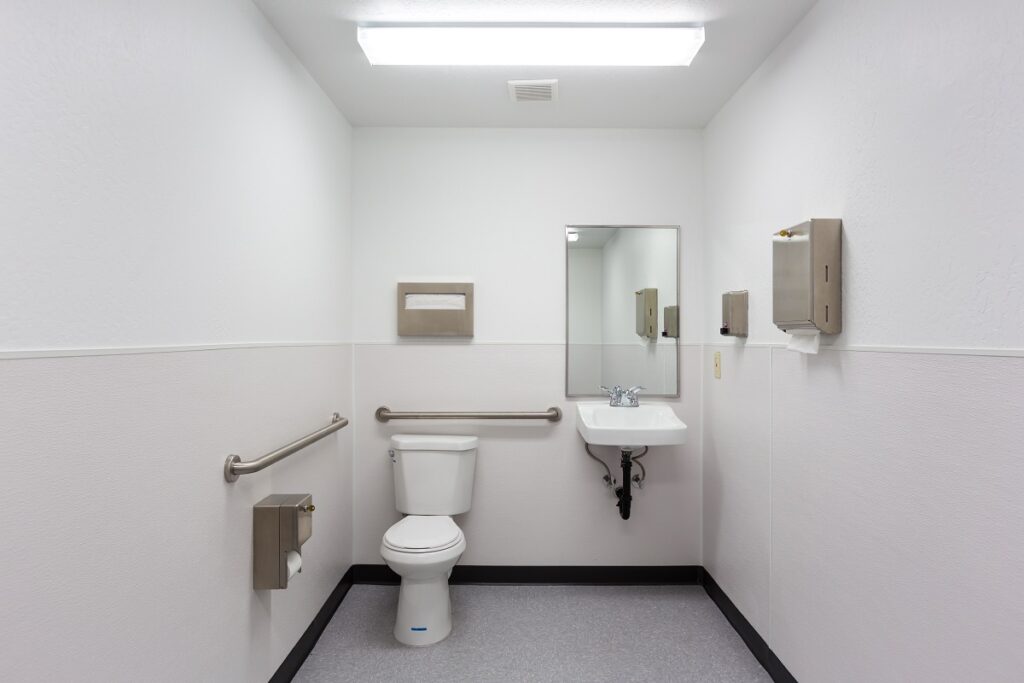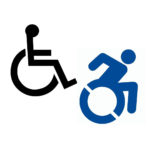I’m finally writing this post so I can find the answer quickly next time…I swear, my coworker John Gant and I have talked about this at least a dozen times over the years.
Today’s Quick Question is this:
Are doors serving single occupancy restrooms required to have door closers (or spring hinges)?
In the 2010 ADA Standards for Accessible Design, Section 604.8.1.2 addresses the requirements for accessible toilet compartment doors. This section states that these doors shall be self-closing. This requirement is also found in Section 604.8.2.2 which covers doors for ambulatory accessible compartments.
So, what is a toilet compartment? ADA Advisory 213.3.1 explains: A toilet compartment is a partitioned space that is located within a toilet room, and that normally contains no more than one water closet. A toilet compartment may also contain a lavatory. A lavatory is a sink provided for hand washing. Full-height partitions and door assemblies can comprise toilet compartments where the minimum required spaces are provided within the compartment.

The ADA Standards do not specifically state that self-closing doors are required for single occupancy restrooms, but other codes, standards, guidelines, or laws may require closing devices on the doors serving these rooms.
A single occupancy restroom without toilet partitions creating a separate compartment would not be subject to the requirements of this section. I know that there are some Board of Health requirements that mandate self-closing restroom doors under certain circumstances, but I have not seen a widespread requirement that applies to all locations in the U.S.
BUT – as I always remind iDigHardware readers and attendees of my classes, there are often state or local requirements that differ from the model codes and referenced standards. Here is an example, from standards of the Massachusetts Architectural Access Board, 521 CMR:
Have you seen requirements for self-closing doors on single occupant restrooms in your area? Please share them in the comments!
When there isn’t a specific requirement, how do you decide whether to specify/install a closing device on an individual restroom door? WWYD?
You need to login or register to bookmark/favorite this content.











We usually do not list a closer on a single occupant restroom door which also helps to achieve the required door clearances in many of our renovation projects. On a personal note, I remember after having ACL surgery how difficult it was managing the restroom on crutches when the door happened to be equipped with a heavy closer. That experience made me much more aware of how door closers often can make accessibility more difficult and I try not to spec them unless code requires it or the client requests it.
I do 100s of these a year with the universities drive for all gender / gender neutral restrooms. We recommend the TEL function on these doors to provide a visual clue when a stall is not in use. Keeps the door ajar just a bit when the stall is empty but the person can easily push it closed. Its the same visual clue you get from a normal stall door in a gendered bathroom.
b. Multi-stall All Gender
i. The main door into the common area outside of the stall can only have a
CLASSROOM function deadbolt if a lock is used at all
1. A CLASSROOM function deadbolt is one that can be locked or
unlocked by a key on the outside but the thumb turn on the inside can
only unlock the lock
2. Only push/pull trim should be used on doors
3. Passage function lock sets should not be used
ii. The doors into the individual stalls (doors that extend floor to top of frame)
1. The Brand of the lock should match the School and the university lock
standard.
2. Key override is not approved except in the Medical School and by
special approval by the university lockshop because special keying is
involved. All other stalls should have coin-turn or Emergency key functionality
3. The lock function will be privacy with indicator trim
a. Corbin ML2030 or ML2060
i. Indicator will be 720F61 x Finish
b. Schlage L9044 or L9444
i. Indicator will be coin turn or emergency key
ii. Wording L283-722
iii. Do not use Legacy indicator
4. 4010 CYL TEL is the recommended closer for stall doors
5. Zero International 539 Door Sweep is required on all stall doors. Must
be mounted on the inside of the door in a way that the sweep touches
the floor at its highest point and allows for a minimal gap for drainage
when closed. Coordinate install with University lockshop